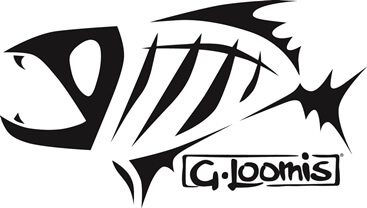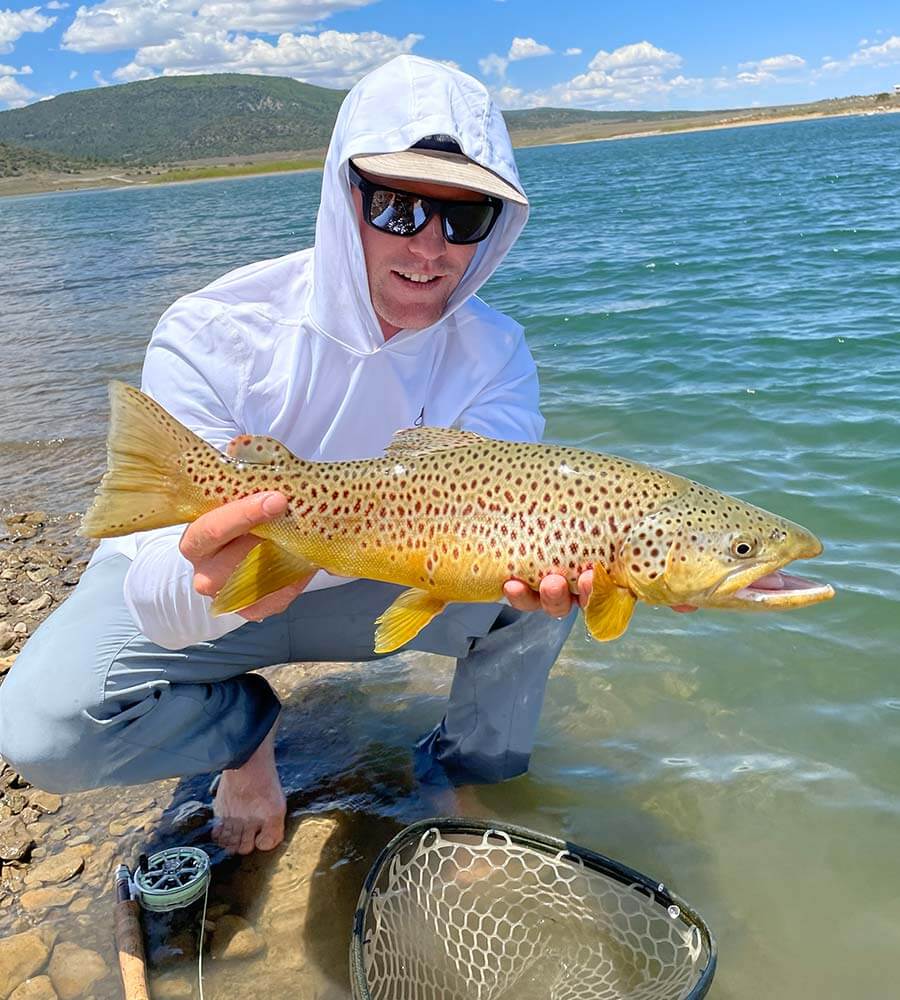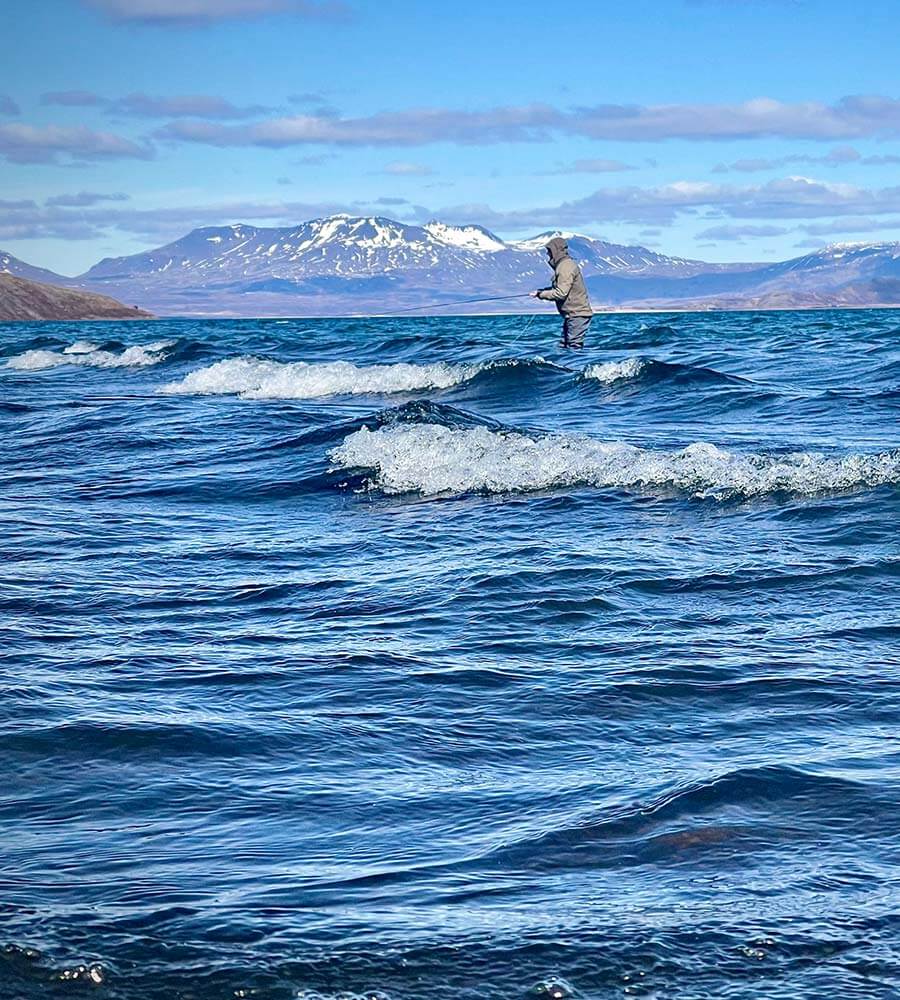Article by John Duncan with casting input from Richard Post, Parker Thompson, Willy Hess, Curtis Nelson and Harry Kearney
The Competitors | Casting Process | Model-by-Model
Jump straight to your length and line weight
8’6″ 4-wt | 9′ 4-wt | 10′ 4-wt | 9′ 5-wt | 9’6″ 5-wt | 10′ 5-wt | 9′ 6-wt | 9’6″ 6-wt | 9′ 7-wt | 10′ 7-wt | 9′ 8-wt | 10′ 8-wt
The Competitors
Scott Session
 Introduced in spring 2024, Scott re-entered the mid-priced rod market with intent to raise value in this category and offer anglers a signature Scott rod as an onramp to the brand. Scott describes the Session series as “fast with feel.” We qualify them as “medium fast,” rather than “fast.” In this casting exercise, we found Sessions to be notably lighter than comparable Sonic and IMX Pro V2 models. They are also slower in action, with only one or two models possessing as much raw power and resilience as their Sage and Loomis counterparts. In lighter line weights (#3-6), most Sessions are sweeter dry fly rods but less capable with streamers. The 7 and 8 weights are a whole different story, but in common trout models, anglers who appreciate lightness, touch and loop control will take a shine to the Session series.
Introduced in spring 2024, Scott re-entered the mid-priced rod market with intent to raise value in this category and offer anglers a signature Scott rod as an onramp to the brand. Scott describes the Session series as “fast with feel.” We qualify them as “medium fast,” rather than “fast.” In this casting exercise, we found Sessions to be notably lighter than comparable Sonic and IMX Pro V2 models. They are also slower in action, with only one or two models possessing as much raw power and resilience as their Sage and Loomis counterparts. In lighter line weights (#3-6), most Sessions are sweeter dry fly rods but less capable with streamers. The 7 and 8 weights are a whole different story, but in common trout models, anglers who appreciate lightness, touch and loop control will take a shine to the Session series.
Sage Sonic
 We are so glad we took this opportunity to cast through the whole Sonic series once again. In design cohesion and fishing purpose, this is one of Sage’s best fly rods. Across the board they feel beefier than the Session series, more similar to IMX Pro V2. They are fast action, but almost every model flexes toward the mid point without overpowering or overlining. Where the Session series gives the impression of lightness throughout the cast, the Sonics express automatic power and control. Perfectly capable with a dry fly, nymph and streamer anglers will fish these rods with confidence, even with awkward rigs in challenging conditions.
We are so glad we took this opportunity to cast through the whole Sonic series once again. In design cohesion and fishing purpose, this is one of Sage’s best fly rods. Across the board they feel beefier than the Session series, more similar to IMX Pro V2. They are fast action, but almost every model flexes toward the mid point without overpowering or overlining. Where the Session series gives the impression of lightness throughout the cast, the Sonics express automatic power and control. Perfectly capable with a dry fly, nymph and streamer anglers will fish these rods with confidence, even with awkward rigs in challenging conditions.
G.Loomis IMX Pro V2
 Similar to the Sonic in overall weight and action, the G.Loomis IMX Pro V2 possess a smooth, progressive action that reflects sophisticated taper design. They are fast action, but not ultra-fast. As a group, they seem to have been designed for nymphs and streamers first, followed by large dry flies such as stoneflies and hoppers, as well as smaller dry flies fished at distance or in the wind. They fish high in their line class and respond well to powerful casting techniques, prototypical of the most popular rods in the Northern Rockies.
Similar to the Sonic in overall weight and action, the G.Loomis IMX Pro V2 possess a smooth, progressive action that reflects sophisticated taper design. They are fast action, but not ultra-fast. As a group, they seem to have been designed for nymphs and streamers first, followed by large dry flies such as stoneflies and hoppers, as well as smaller dry flies fished at distance or in the wind. They fish high in their line class and respond well to powerful casting techniques, prototypical of the most popular rods in the Northern Rockies.

Line choices and casting process
The purpose of this review is to analyze and compare the traits of these highly competitive fly rods. We hold all in equal regard and aim to help anglers choose the best model for their fishing opportunities and rod action preferences. There is no empirical answer in fly fishing. Anglers fall in love for a myriad of reasons. We cast fly lines that are appropriate to the purposes of each line weight and used the same line on each rod in the model group. The 3-weight category has no models in common, so we skipped that line weight in this report.
Model Comparisons
Session 854-4 vs Sonic 486-4
The Session 854-4 is notably lighter than the Sonic and more oriented toward fishing dry flies. It casts tight loops but can be overpowered by an aggressive cast or heavy, awkward fly rigs. Delightful, light and playful, the Session 854-4 is the best choice for anglers who seek a 4-weight for dry fly fishing on medium sized and smaller rivers. Correspondingly, the Session should be paired with a true-to-line weight fly line such as the Scientific Anglers Trout taper. The Sonic 486-4 is a heavier rod, but capable of casting farther with larger flies under potentially windy conditions. It has a machine-like quality that will fall into any caster’s hands easily. The Sonic 486-4 is a better choice for fishing nymph/indicator rigs and small streamers in addition to dry flies. This rod fishes best with a slightly heavy line such as the Rio Gold or SA MPX.
Session 904-4 vs Sonic 490-4 vs IMX Pro V2 490-4
Here we compare three outstanding fly rods that are distinct in character. The Session is by far the lightest and best suited to fishing smaller dry flies. It casts with a quick tempo similar to the Sonic and IMX Pro, but only when paired with a light line like the SA Trout Taper or Rio Technical Trout. Capable of fishing small dry-dropper rigs, this rod excels with small dry flies, long leaders and touchy presentations. The Sonic and IMX Pro have a similar casting cadence: fast, but not ultra fast. They are heavier rods than the Scott, but offer more command at distance and are better choices for fishing nymphs and small streamers. These rods may be paired with heavier lines, too, which enables the angler to fish larger flies and nymph rigs without struggling with the cast. The IMX Pro V2 bears a smoothness characteristic of the whole series. It casts like a well-iron shirt wears, especially in the hands of an experienced angler who can coax maximum loop control out of a well-tuned fly rod. The Sonic is the most “automatic” of the rods under comparison. Like most others in the series, it flexes comfortably toward the mid-section and recovers with authority. It has a distinct “sweet spot” that is located ideally for casting 30-50 feet with your eyes closed. The Sage may be the best nymphing rod in the group as the tip follow through lends to easy roll casting and line mending. While neither the Loomis nor Sage are as sweet as the Scott with a size #16 Elk Hair Caddis at 35 feet, both offer greater power and control with a grasshopper at 50 feet.
Session 1004-4 vs IMX Pro V2 4100-4
These rods cater to specialists. 10′ 4-weights offer superior reach and sensitivity, but the angler usually has a specific purpose for this rod. The Session 1004-4 is medium to slow action by modern standards. It is designed for short distance casting and technical nymphing techniques with maximum line control and sensitivity to subtle strikes. It will roll cast and mend line like a champ, but has limited capability at distance, with sinking lines or heavy flies. The IMX Pro 4100-4 is more “fast action,” an ideal choice for stillwater anglers and for high stick nymphing in mixed water conditions and potentially at greater distance than the Session. Choose this rod for all-purpose light line techniques, whereas the Scott is specifically more suited to technical nymphing.
Session 905-4 vs Sonic 590-4 vs IMX Pro V2 590-4
These fine fly rods offer tremendous value and performance for any angler. Each emblematic of its series, the angler could choose blind without regret. No need to choose blind. The Session 590-4 is the lightest rod in the group and most bent toward dry fly fishing. It throws laser loops and offers the greatest feedback to the angler. It is perfectly capable with a dry dropper or double nymph rig but may struggle with larger streamers and heavy-headed specialty lines. While the Sonic is the heaviest rod in this group, it possesses the most command and casting range. The rod is perfectly tuned to fish a Rio Gold or SA Infinity taper from 20 to over 60 feet. It is the best nymphing rod in the group. Power and control seem to increase at distance and the rod may be hauled aggressively without loosing stability. This rod is a driver. The Loomis IMX Pro V2 590-4 fishes highest in the line class. It is heavier than necessary for small dry flies but a great choice for hoppers and stoneflies from a driftboat or long casting while wading deep water. The IMX Pro V2 is also the best 5-weight for fishing streamers. We would describe this rod as “fast but progressive,” designed for power on a highly refined rod blank. Like the Sonic, it is best paired with a slightly heavy fly line such as a Gold, Infinity Taper, MPX or Rio Grand.
Session 955-4 vs Sonic 596-4

These two rods have equal capability but unique character. The Session is lighter with a classic “tip action” typical of fast action rods. This is one of the quickest rods in the series with rigidity in the butt and mid-section that holds line high on the backcast and delivers distance with ease. It could fish a stonefly across the Gunnison or double nymph rig under an indicator. The Sonic achieves its power through substance rather than stiffness. It is heavier than the Session, but that weight translates directly into power, whether roll cast 20 feet or knocking a nymph rig across the river. The Session loves a tight loop at any distance. The Sonic casts open loops at short and medium distances, ideal for nymphing, with a loop that naturally tightens beyond 40 feet as the rod loads into the powerful but section. The Session will be easier to swing all day but the Sonic will do more work for the angler. On stillwater, the Session will have a minor advantage for lifting and casting a sinking line. The Sonic’s action is most tuned for a double nymph rig. Both are great fly rods, fish catching machines on any water. The Session has a fighting butt whereas the Sonic does not.
Session 1005-4 vs IMX Pro V2 5100-4
These rods mirror their 4-weight equivalents. The Scott is much slower action, ideal for technical nymphing and short-to-mid distance dry fly fishing. It offers tremendous feedback to the angler but lacks the backbone for sinking lines or large flies fished in heavy currents. The Loomis IMX Pro V2 is a stouter rod, sacrificing a bit of touch but offering much more in the way of power and control. This is the better rod for high sticking large nymphs, working with sinking lines and fishing larger rivers. We characterize the Scott as medium action while the Loomis is fast action.
Session 906-4 vs Sonic 690-4 vs IMX Pro V2 690-4
The Session is lighter and more moderate action than the Sage or Loomis. It’s an excellent general-purpose western trout rod with a medium-fast action and even flexing blank. From short to long, it casts with intuition and wonderful feel. This rod should be fished with a Rio Gold, SA Infinity Taper or SA MPX, but may struggle with specialized streamer lines. The Sage Sonic 690-4 (and 691-4) are the best pure nymphing rods in this group. The tip seems to “follow through,” or, as Richard puts it, has a “snappy unload.” It seems to deliver the line and fly with greatest authority, partially resulting from extra mass in the rod blank. This quality helps cast wind-resistant strike indicators, bass bugs and other awkward rigs with a slightly open loop that still carries excellent momentum. The IMX Pro has the even-flexing characteristic of the whole series. It possesses the most raw power among these rods, but requires more precise input from the caster. This is a much better streamer rod than the Session and preferred by a shade over the Sonic for this purpose, too. The IMX Pro is the best rod for fishing full sink or sink tip lines.
Session 956-4 vs Sonic 697-4
These two fly rods are similar in character and will fish their target water with equal capability: big river nymphing, stillwater angling with sinking lines or all-purpose Alaska rainbow rods. By a small degree, the Sage is more power oriented. Both rods are true fast action. They hold the line high on the back cast and offer outstanding reach for long distance shots and superb on-the-water line control. The Scott is a shade lighter, the Sage a tad heavier, but like the rest of the Sonic series, the 697-4’s mass translates to automatic power and stability. The Sage feels like it wants power from the angler and will deliver the goods best at distance. The Scott has a more pure “tip action,” but both have a similar strong and fast casting action. The lightness of the Scott makes it less demanding for all day blind casting. The overall command of the Sage may offer an advantage with awkward nymph/indicator rigs. These are both outstanding fly rods.

Session 907-4 vs Sonic 790-4 vs IMX Pro V2 8710-4
The G.Loomis IMX Pro V2 is specifically designed for streamers and, thus, for both trout and bass. Compared with the Session and Sonic, it is stiffer through the bottom 3/4 of the rod and softer in the tip with a well-defined casting flex point about 1/4 of the way down from the the tip top. It casts streamers and bass bugs with great command from this release point. Richard Post calls the taper “intelligent, purposeful.” The top section flexes enough to put some graphite behind twitches on the retrieve, adding life to the streamer presentation. The Session and Sonic are more “progressive” in action, not to be mistaken with “slower” or “weaker.” The Sonic is the heaviest, but casts with an automated confidence that allows the angler to fall into an easy rhythm throwing large flies. It has the best command at distance and is also the best roll caster of the three. The blank is lively, flexing toward the middle of the rod and recovering with great power and resilience. This would be our choice for the largest streamers and most wind-resistant bass bugs. The Sonic will best accommodate specialized streamer lines such as the SA Titan Long and Rio Outbound because the powerful butt section offers maximum torsional control. Like others in its series, the Session 907-4 is the lightest rod in this group and possesses the most progressive action. It is the sweetest pure caster and would be our choice for fishing stonefly dries (like salmonflies!), mice and small-to-medium sized streamers, up to about a size #8. While certainly capable of throwing the largest articulated streamers (size #2-#6), the best qualities of this rod surface when the angler may enjoy it’s finely tuned taper and casting acumen. So, overload only if necessary!
Sonic 7100-4 vs IMX Pro V2 7100-4
These models are designed for big water nymphing, stillwater angling and swing fishing for steelhead. Both offer outstanding line control and nimble single-hand Spey casting ability. The Sonic offers greater down-range casting and cross-river nymphing ability. The Loomis IMX Pro V2 is slightly heavier and more progressive feeling. Easier to mend and superior on the roll cast, this would be our choice for moderate sized water. The Sage Sonic offers greater overhead casting command and ability to fish lines with extra heavy heads. It also lifts a sinking line with the greatest authority for starting your next cast.
Session 908-4 vs Sonic 890-4 vs IMX Pro V2 8810-4

Our comparison of these three models mirrors the 9′ 7-weight category. All three are outstanding fly rods. The Sonic is most capable of crossing over to saltwater thanks to its stout build, fast action and salt-proof reel seat. The Session is an amazing caster, kind of old world in the sense that no one makes a medium-fast 9′ 8-weight anymore. This is our favorite bass rod in the group and a no-brainer for heavy trout opportunities in Alaska and Patagonia. The lack of a metal reel seat will cause some anglers to hesitate, but why, really? (Just rinse it!) This rod would be delightful on a redfish or bonefish flat. The Session is the lightest rod in this group. Like it’s 7-weight cousin, the G.Loomis IMX Pro V2 8810-4 is the best casting streamer rod. It won’t roll cast or mend line like the other two, but for chucking heavy streamers off the tip, it is unmatched. Choose this rod for pike, heavy bass and heavy trout on the streamer.
Sonic 8100-4 vs IMX Pro V2 8100-4
Both outstanding fly rods, especially for the price, the Sonic 8100-4 and IMX Pro V2 8100-4 will fish the same water with equal capability but slightly different character. Both are accurately described as fast action. They are heavier than their high end equivalents (NRX+ 8100, R8 Core 8100-4, Swing 988-4), but terrific casters and capable of fishing at great distance. The Sonic is slightly heavier but casts the tightest loops. It may be the best choice for casting and swinging a dry line or light sink tip. The IMX Pro V2 is a tiny bit lighter, but flexes more progressively, offering greater loop control. The nymphing angler may find an advantage with this rod in opening the casting loop for controlled, tangle-free presentations with strike indicator rigs. The Loomis will cast a dry line or sink tip beautifully, too, but for a smidge less distance than the Sage Sonic. Both rods are stout enough to play adult steelhead and salmon. Great rods, take your pick!
[Fly rod pages]
[Scott Session pages]
[Sage Sonic pages]
[G.Loomis IMX Pro V2 pages]